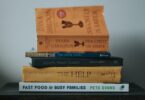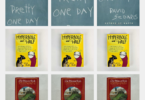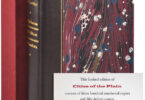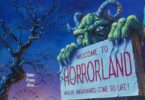It’s hard to get into the Christmas spirit without the familiar figures of Scrooge, the Grinch, and of course Santa, the big, jolly guy himself. We’ve compiled a list of the most popular Christmas books in classic literature – have you read them all? What favorites of yours did we miss from our collection?
How the Grinch Stole Christmas! by Dr. Seuss (1957)

The Grinch first appeared in a 32-line illustrated poem titled “The Hoobub and the Grinch,” published in 1955 in Redbook magazine. Seuss later revisited the character of the Grinch, writing him into his own book, which was published in 1957, the same year Seuss released The Cat in the Hat. The first Seuss book with a villain as the main character, How the Grinch Stole Christmas! is compared with Dicken’s classic, A Christmas Carol, for showing the true meaning of Christmas and rejecting the greed and commercialism of the season.
Dr. Seuss claimed the Grinch was reflective of his own personality, and he notes in the book that the Grinch has had to put up with the Whos celebrating for 53 years, while Seuss was 53 at the time the book was written. The book was made into a 1966 animated TV movie starring Boris Karloff, a 2000 live-action film starring Jim Carrey, and a 2018 3D computer-animated film. This book is great for all ages – older kids and parents can read it to the youngest in the family.
The Polar Express by Chris Van Allsburg (1985)

Published by Houghton Mifflin in 1985, author Chris Van Allsburg won the Caldecott Medal for the illustrations in The Polar Express, his second Caldecott following Jumanji (1981). The Polar Express is a magical train that stops in the night for a boy and his sister, taking them to the North Pole to visit Santa Claus. Inspired by the author’s hometown of Grand Rapids, Michigan, and an old steam locomotive, the book has sold over 12 million copies since its publication. In 2004, it was made into a computer-animated film starring Tom Hanks. This book is great for ages 3 and up.
A Christmas Carol by Charles Dickens (1843)

Although it was published in 1843, author Charles Dickens had begun A Christmas Carol in the early 1840s as a way to get his family out of the deep debt they were in. Released on December 19th, the first edition run of about 6,000 copies was sold out before Christmas Eve! The story and its characters have become an indelible part of the season, showing generations hope through the character of Scrooge, a selfish and miserly old man who redeems himself through compassion. Along with the familiar ghosts and the Cratchit family, this tale illustrates the true meaning of Christmas through the joy of family gatherings and generosity towards others.
The Night Before Christmas by Clement C. Moore (1823)
This classic poem was first published anonymously in New York’s Troy Sentinel in 1823, with Clement Clarke Moore later claiming authorship. More recently the family of Henry Livingston Jr. has contested that authorship with some reasonable evidence. We will probably never know who the real author of the poem is, but for nearly 200 years it has shaped how we visualize Christmas and St. Nick.
Many versions have been published throughout the years. One notable version is the 1931 edition, (published by J.P. Lippincott in New York and George G. Harrap & Co. Ltd in London) illustrated by the famous English artist Arthur Rackham, known for his illustrations of Peter Pan in Kensington Gardens and Fairy Tales of the Brothers Grimm. Although the language of this poem may seem a little dated, there is even a modern board book, with illustrations by Charles Santore, for the littlest bibliophiles.
The Nutcracker by E. T. A. Hoffman (1816)
The Nutcracker and the Mouse King was written in 1816 by German author E. T. A. Hoffmann. In this tale, young Marie’s favorite Christmas toy, the Nutcracker, comes to life, defeats an evil Mouse King in battle, and whisks her away to a magical kingdom populated by dolls.
The well-known 1892 Tchaikovsky ballet was actually based on Alexander Dumas’ adaptation, The Story of a Nutcracker, in which the main character’s name is changed to Clara.
In 1983, the children’s author and illustrator Maurice Sendak was asked to design the set for the Pacific Northwest Ballet’s stage production of the Nutcracker. Immersing himself in the original tale of The Nutcracker and the Mouse King, Sendak brought out the darker story components that were usually glossed over in the ballet. Sendak uses the name Clara and focuses on her struggle with strange and conflicting emotions involved in growing up. Sendak also released a version of the original E.T.A. Hoffman story along with his illustrations from the ballet in 1984, and although it went out of print for many years it was reissued in 2012, after Sendak’s death. This story is dense and probably best for 9 and up, although some parents read it to younger kids, especially as an introduction before seeing the ballet.
The Father Christmas Letters by J.R.R. Tolkien (1976)
J.R.R. Tolkien began his writing career by penning these yearly letters to his own children between 1920 and 1942. They were written from Father Christmas, or his elvish secretary, and delivered to his children complete with a North Pole stamp and envelope decorated by Tolkien himself. They are said to have inspired parts of his famous Lord of the Rings series.
First published in 1976 in both the UK (Allen and Unwin) and US (Houghton Mifflin) on the third anniversary of Tolkien’s death as The Father Christmas Letters, they were republished in 1999 as Letters from Father Christmas. Tolkien began these letters to his children when they were toddlers, so they are appropriate for any and all ages.
A Child’s Christmas in Wales by Dylan Thomas (1954)
A Child’s Christmas in Wales was a prose poem by the author Dylan Thomas. It was first recorded in 1952 and it was later credited with being one of the first pieces of literature to launch audiobooks.
Thomas died in 1953 at the age of 39, and A Child’s Christmas in Wales was later published in book format, first in 1954 under “Quite Early One Morning,” then in 1955 as its own title A Child’s Christmas in Wales. This story is best for children around 8 and up, and it is also a wonderful nostalgic tale for adults to enjoy, especially when
The Gift of the Magi by O. Henry (1905)
This story was originally published on December 10th, 1905 in The New York Sunday World as “Gifts of the Magi,” and later as “The Gift of the Magi” in the short story collection The Four Million. O. Henry was famous for his surprise endings, and this heartwarming tale with a twist about a poor young husband and wife and their struggle to find special Christmas gifts for each other never disappoints. A great Christmas story for readers 8 and up.
The Snowman by Raymond Briggs (1978)
This picture book by the English author and illustrator Raymond Briggs was first published by Hamish Hamilton in the UK and Random House in the US in 1978. An animated television special that aired in 1982 in Britain was an immediate success and is now a Christmas tradition in the UK. The book doesn’t involve the Christmas parts of the plot shown in the animated rendition but is still a sweet wintertime tale. This book is geared toward ages 5-7, but there are also board books available for younger children.
The Life and Adventures of Santa Claus by L. Frank Baum (1902)
The Life and Adventures of Santa Claus, published in 1902 by The Bowen-Merrill Company in Indianapolis, was written by L. Frank Baum, best known for The Wonderful Wizard of Oz (1900) and its sequels. This story follows Santa from his birth in the Forest of Burzee and through his life spent combating the darkness of the world by bringing joy through sharing and caring. This book is full of magical, immortal creatures, and it explains the origins of Santa, as well as a lot of his magical secrets – like how he gets down the chimney and how he delivers all the toys in one night. This is best for older kids and adults, aged 10 and up.
Like this list of classics? Take our quiz to see which one you should read!
Amy C. Manikowski is a writer living in Asheville, NC.













